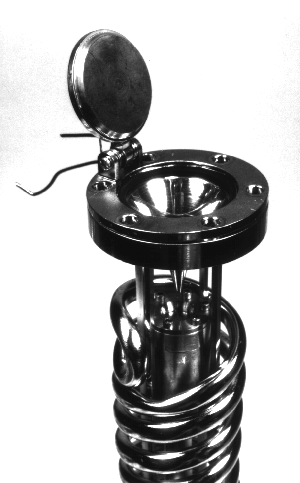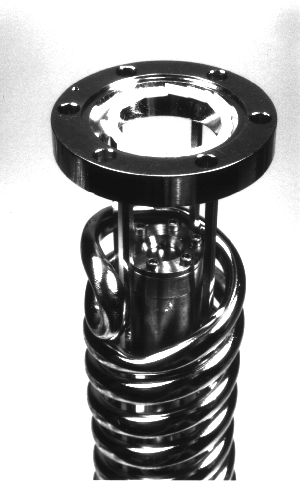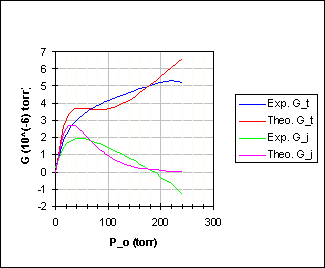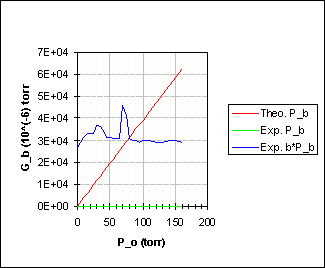
The first problem was addressed by moving the nozzle heater closer to the nozzle itself so that the nozzle would be heated more efficiently, preventing it from freezing up. It was also hoped that the heat radiating from the nozzle would keep the skimmer above room temperature to avoid freezing up of the skimmer. The heater modification was a success in preventing the nozzle from freezing up, but the skimmer is still freezing up after about 3 hours of typical operation. It has been suggested to thermally decouple the skimmer from the can via 2 Kalrez O-Rings and ceramic spacers to keep the correct alignment to the nozzle. If that does not work, a 1 loop heater can be connected to the nozzle heater, curling once around the outer edge of the skimmer to keep it above room temperature. The wire should be contained in a circular ceramic tube to prevent shorts to ground. The latter suggestion is currently being implemented.
The second problem was solved by placing a flap externally on the end of the jet, which is operated by the standard shutter in the source flange as shown in Figure 10. The seal is made via a Kalrez O-Ring. It was shown that this arrangement decreases the pressure in the growth chamber during warm-up of the jet cryoshroud by several orders of magnitude, never exceeding 10^-6 torr. After several weeks of operation the O-ring fell out of its position, but the problem is currently being fixed.
The second prototype was characterized similar to the first one. At the time this section was written only one set of reliable data was available. Data sets seemed to vary from run to run due to reasons discussed in the concluding section. The set analyzed was taken at a nozzle temperature of 353°C (626 K). It was not possible to fit theoretical curves close to the experimental curves obtained from the data. The fits are shown in Figure 12. For completeness the fitting parameters used are shown in Table 7.
It is believed that the failure of the model used was mainly due to a significant fraction of the NH_3 being dissociated at 626 K in the nozzle. Note that the dissociation fraction is hard, or even impossible, to calculate as covered in another section. The resulting N_2 and H_2 can not be pumped by the cryoshroud which increased the background pressure P_b drastically attenuating most of the beam. Due to the difficulty of reproducing consistent data sets no further analysis was attempted and instead a simpler jet is suggested in another section which should be much easier to characterize as well as fix many of the complications encountered with the current jet.

Figure 10: NH_3 Jet Prototype #2 (Ref. 25)




Figure 11: Photograph (Ref. 23) of NH_3 Jet Prototype #2


Figure 12: Jet Intensity and Background Intensity Characterization for the NH_3 Jet Prototype #2

Table 7: Fitting Parameters for NH_3 Jet Prototype #2
Table of Contents